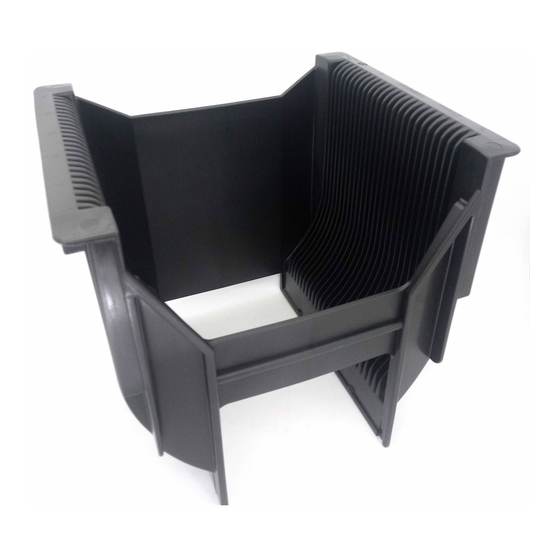
Summarization of Contents
General Terminology and Definitions
Definitions
Defines key terms used in the manual, such as bar end, crossbar, end wall, flange, and 'H' bar.
Wafer Plane
Specification Purpose
Explains the purpose of wafer plane specification for predictable wafer location in carriers.
Benefits
Lists advantages of improved wafer plane, like reduced adjustments and improved accuracy.
General Definitions
Defines terms related to wafer plane, such as wafer plane, zone, and pocket center plane.
Specification Description
Details how wafer plane is defined by offset dimension and tolerance from Datum A.
Specification Values
Outlines typical offset dimensions and tolerances for wafer plane specifications.
Use with Automated Equipment
Explains automated equipment's use of wafer plane zone and the impact of tolerances.
Four Point Contact
Contact Location
Shows the location of the four contact points on the carrier via diagram.
Benefits of Four Point Contact
Explains benefits like correct orientation and consistent placement for wafers.
Equipment Interface
Discusses design considerations for equipment interfacing with the four points.
Wafer Carriers Included and Exceptions
Lists specific carrier models and their four-point contact features.
General Interface Information
Recommended Contact Points
Urges use of specific contact points for optimal carrier interface.
Print Based Interface Design
Advises designing interfaces based on prints with controlled dimensions.
Tolerances
Emphasizes using full tolerance ranges for interface development.
Reducing Particle Generation
Suggests design approaches to minimize particle generation from interfaces.
Interface Points: Wafers Horizontal
General Recommendations
Recommends using specific contact points for horizontal wafer handling.
Sample Interface Plate
Guides interface plate design for horizontal carriers, emphasizing generous radiuses.
Recommended Contact Areas
Lists recommended contact areas (A+B, A+C) for horizontal positioning.
Contact Area A
Specifies dimensions (D6a, D5b) for designing Area A interfaces.
Contact Area B
Provides dimensions (D6b) and four-point contact info for Area B interfaces.
Contact Area C
Details dimensions (D4a) and four-point contact for Area C interfaces.
Interface Points: Wafers Vertical
General Recommendations
Advises using specific contact points for vertical wafer handling.
Sample Interface Plate
Describes an interface plate for vertical carriers using center notches.
Recommended Contact Areas
Specifies A+B+C as the recommended contact area for vertical handling.
Contact Area A
Discusses center notches (D9a-e) for accurate wafer carrier registration.
Center Notch Location
Provides specific measurements for center notch locations on 25 and 26 capacity carriers.
Interface Points: Robotic Handling
General Recommendations
Stresses referencing carrier specifications for robotic handling interfaces.
Robotic Handling Features
Categorizes features for robotic handling, including flanges, handles, and top flanges.
Endwall Flanges
Illustrates endwall flanges with diagrams of inboard and outboard types.
'H' bar End Flanges
Describes 'H' bar end flanges designed to avoid interference with the 'H' bar surface.
Endwall Handle
Details endwall handles placed toward the center and above the carrier's center of gravity.
Top Flanges
Explains top flanges for robotic movement where precise placement is not critical.
Material Information
Material Properties and Equipment Interface
Discusses how dimensional stability, static protection, and moisture absorption affect interface.
Dimensional Stability
Defines dimensional stability as a material's ability to retain consistent dimensions over time.
Static Protection
Explains static protection's role in preventing static charge buildup and discharge.
Moisture Absorption
Describes moisture absorption and its effect on vacuum pump down times.
Applications
Categorizes wafer carriers into transport and process carriers based on application.
Wafer Transport Carriers
Describes wafer transport carriers for storage and transit, noting limited chemical resistance.
Process Wafer Carriers
Details process wafer carriers for chemical resistance, often using PFA material.
Detailed Material Properties
Presents detailed static protection, moisture absorption, temperature limits, and flammability.






Need help?
Do you have a question about the A192-80M-0215 and is the answer not in the manual?
Questions and answers